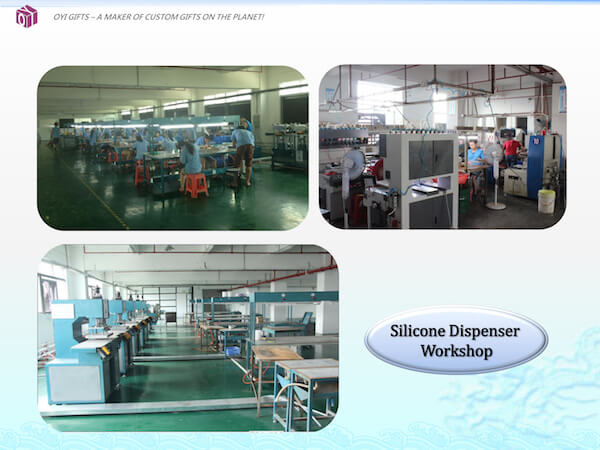Silicone products believe that we are not unfamiliar, in our life around, there are small to our common electronic products mobile phone case, and large to have car equipment in the silicone gas tube, it can be said that silicone products have been in our life in the application of very wide, then we are clear silicone products production process is how? The following OYIGIFTS to introduce for you.
The silicone products production process is introduced.
The first “selection of materials” according to the use of the production environment and quality requirements to choose the appropriate silicone rubber materials, oil, acid resistance, alkali resistance, high and low-temperature resistance, tensile strength and so on these requirements, and to determine the choice of which material is more reasonable.
The second “refining” many times we purchase back the raw material is still only raw rubber, and can not be used directly in production, but also need to carry out secondary processing, we call it refining, refining is also in the raw rubber inside a certain proportion to add accelerators, color powder, and other auxiliary molding ingredients, in order to achieve production requirements.
The third “cutting” process is the refining of the whole piece of material, which then needs to be cut into the final weight, shape, and size that we need, according to the structure and size of the product.
The fourth “forming” step is the most important step after completing the above work. We have to put the material cut in the previous step into the silicone mold and hot press it according to the pre-set process parameters to get the final size we need, but of course, there is no hot pressing but directly injecting the material into the mold cavity to get the required product, which is similar to the principle of a syringe.
Notes on the production of silicone products.
- Silicone raw materials are generally gel-like, somewhat similar to play-doh, colorless, translucent, and odorless.
- Its main feature is that it is resistant to both high temperature (300°C) and low temperature (low -100°C), and is currently cold and high-temperature resistant rubber; it also has excellent electrical insulation, high stability to thermal oxidation and ozone, and is chemically inert. The disadvantages are low mechanical strength, poor resistance to oil, solvents, and acids, and bases, difficult to vulcanize, and expensive. Operating temperature: -60°C to +200°C. The above is the description of silicone rubber in the manual.
- Operating temperature: As mentioned above, it is generally set at -40°C to 200°C, and up to 230°C for a short period of time.
- Aging problems: poor resistance to oil, acid, and alkali, not much to do with the force.
- Bonding problems: in the absence of surface treatment before, in addition to silicone products as adhesives and silicone parts bonding, and other zero sticky all must be activated by the surface, rubber surface vulcanization treatment in order to stick firmly. All substances that can be vulcanized or cross-linked with rubber are collectively known as vulcanizing agents, also known as cross-linking agents. Many types of vulcanizing agents, and are still increasing, have been used vulcanizing agents are sulfur yellow, selenium, tellurium, sulfur-containing compounds, metal oxides, peroxides, tree esters, quinones, amines, etc.
- Material hardness: rubber parts are available on the domestic market by Shore hardness in theory between 10 degrees and 80 degrees. Those that can be conveniently found are generally between 20 degrees and 70 degrees, with 40 to 50 degrees being commonly used.
How silicone products are produced
Silicone products need to be selected from the beginning before the material, needs to go through the refining, cutting, and then molding process, during this period if there are some small problems, you can look at the above content, the above is all about how silicone products are produced, if you need to consult more about silicone products related content, please contact us.

